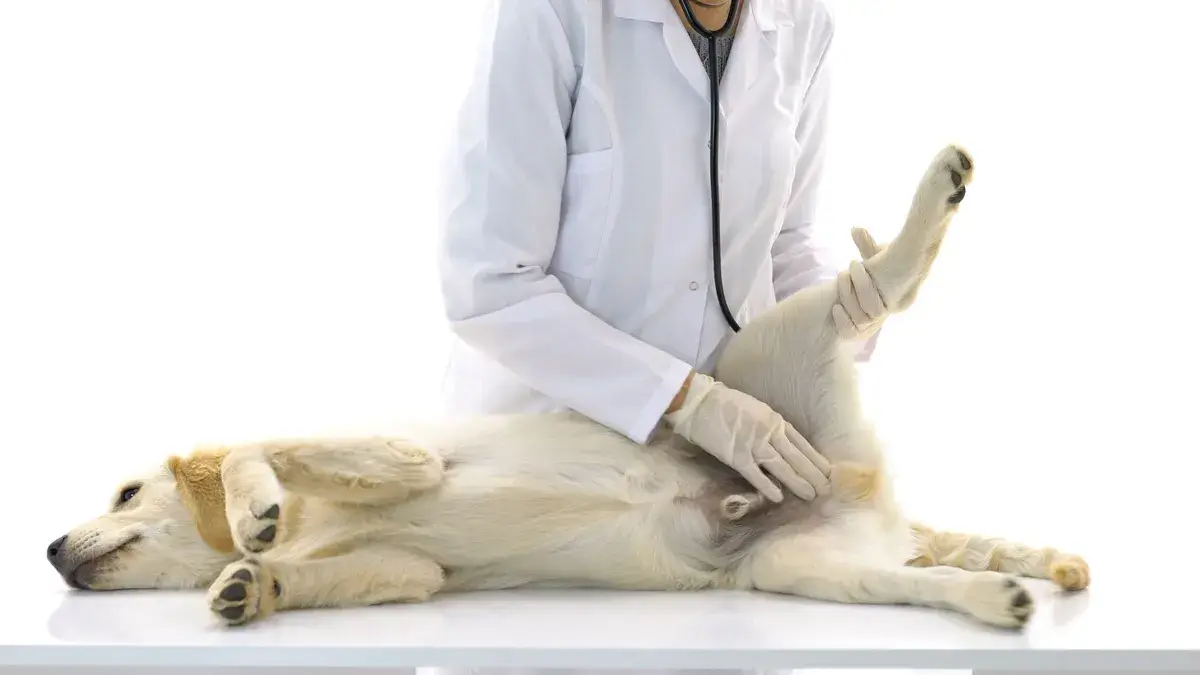Paraphimosis in dogs is a distressing and potentially serious condition where a dog’s penis becomes stuck outside the preputial sheath and cannot retract back inside. This condition can cause significant pain, swelling, and if untreated, may lead to tissue damage or necrosis. Understanding what paraphimosis in dogs is, how to recognize it, and how to provide immediate home treatment before seeking veterinary care can make a critical difference in your dog’s recovery.
Table of Contents
What Is Paraphimosis in Dogs?
Paraphimosis is defined as the inability to retract the penis into the preputial cavity or sheath after it has been extruded. It most commonly occurs after mating, manual semen collection, or trauma but can also be caused by foreign bodies, infections, or neurological issues. When the penis remains exposed, the skin at the preputial orifice can invert, trapping the penis outside and impairing venous drainage. This leads to swelling (edema), pain, and dryness of the penile mucosa, which can escalate to severe complications if not addressed promptly.
Recognizing the Symptoms of Paraphimosis in Dogs
Early recognition of paraphimosis symptoms is essential for timely intervention. Common signs include:
- Visible swelling and color changes: The glans penis may swell significantly and change color from red to dark purple or blue, indicating poor blood circulation.
- Pain and discomfort: Dogs often show pain by whining, yelping, licking or biting the affected area, and may display restlessness or difficulty sitting or lying down.
- Difficulty urinating: Some dogs may have trouble urinating or dribble urine due to obstruction caused by swelling.
- Behavioral changes: Loss of appetite, lethargy, or increased irritability can also be observed.
- Dryness of the penile lining: Without treatment, the exposed mucosa can dry out, leading to further tissue damage.
If you notice any of these symptoms, immediate action is necessary to prevent complications.
How to Fix Paraphimosis in Dogs at Home
While veterinary care is crucial, some early interventions at home can help reduce swelling and discomfort, potentially allowing the penis to retract naturally. Here are steps for paraphimosis in dogs home treatment:
- Stay calm and keep your dog calm: Stress can worsen the condition, so soothing your dog is important.
- Clean the affected area: Gently wash the penis and surrounding skin with warm water and mild, unscented soap to remove dirt or irritants.
- Apply a cool compress: Use a cold, damp cloth or a bag of frozen peas wrapped in a towel on the swollen penis for a few minutes to reduce swelling.
- Use a lubricant: Liberally apply a water-based lubricant like petroleum jelly or KY jelly to the exposed penis to help it slide back into the sheath.
- Manual retraction: Carefully and gently try to push the penis back into the prepuce by sliding the preputial skin forward and guiding the penis inside. This should be done with extreme caution to avoid causing pain or injury.
- Sugar paste application: If swelling persists, applying a thick sugar paste made from white sugar and water can help draw out fluid and reduce edema, facilitating retraction.
If these home treatments do not succeed within 30 minutes or if your dog appears to be in severe pain, seek veterinary care immediately.
Paraphimosis Treatment in Dogs by Veterinarians

Veterinary treatment for paraphimosis typically begins with thorough cleansing and lubrication of the exposed penis, followed by manual repositioning of the penis into the preputial sheath. If swelling is severe, cold or warm compresses may be applied to help reduce edema.
In cases where manual retraction is not possible, sedation or general anesthesia may be necessary to relieve pain and facilitate treatment. Sometimes, a temporary purse-string suture is placed to keep the penis inside the sheath.
Surgical intervention may be required in chronic or severe cases, including:
- Preputial orifice revision: Surgical enlargement or adjustment of the preputial opening to prevent recurrence.
- Tension-release incisions: To relieve constriction and restore blood flow5.
- Partial amputation: In extreme cases where tissue necrosis has occurred, partial removal of the penis may be necessary.
Veterinarians will also provide pain relief and antibiotics if infection is present5.
A Personal Story: Musket’s Paraphimosis Emergency
Musket, a working Cocker Spaniel, once experienced a severe case of paraphimosis that shocked his owner, a seasoned dog trainer with decades of experience. Musket’s penis was fully extended and swollen, with the bulbus glandis (swollen part of the penis during arousal) mistaken for testicles. His owner quickly applied home remedies—cleaning, lubrication, and cold compresses—while preparing to rush Musket to the vet if needed. Fortunately, the swelling reduced, and the penis was gently retracted back into the sheath. This experience underscored the urgency of recognizing paraphimosis and acting swiftly to prevent permanent damage.
Preventing Paraphimosis in Dogs
- Regularly check your dog’s genital area for signs of irritation or swelling.
- Maintain good hygiene and grooming, especially in dogs with long hair around the genitals.
- Avoid trauma or rough handling of the penis.
- Consult your vet if your dog has recurrent episodes, as surgical options may be advisable to prevent future occurrences.
Frequently Asked Questions (FAQs)
What causes paraphimosis in dogs?
Causes include trauma, mating, manual semen collection, foreign bodies, infections, or neurological problems.
Can paraphimosis resolve on its own?
It may resolve quickly if mild, but most cases require intervention to prevent complications.
How urgent is paraphimosis treatment?
It is an emergency. Delayed treatment can lead to tissue necrosis and permanent damage.
Is it safe to treat paraphimosis at home?
Mild cases can be managed at home with cleaning, lubrication, and cold compresses, but veterinary care should be sought if unsuccessful within 30 minutes.
What happens if paraphimosis is left untreated?
Untreated paraphimosis can cause swelling, pain, tissue death, infection, and may require surgical amputation.
Conclusion
Paraphimosis in dogs is a painful and potentially dangerous condition that requires prompt recognition and treatment. Early home interventions such as cleaning, lubrication, and cold compresses can help reduce swelling and facilitate repositioning of the penis. However, veterinary care is essential if these measures fail or if the condition is severe. Understanding what paraphimosis in dogs is and knowing how to fix paraphimosis in dogs at home can save your dog from serious complications and ensure their comfort and health.
